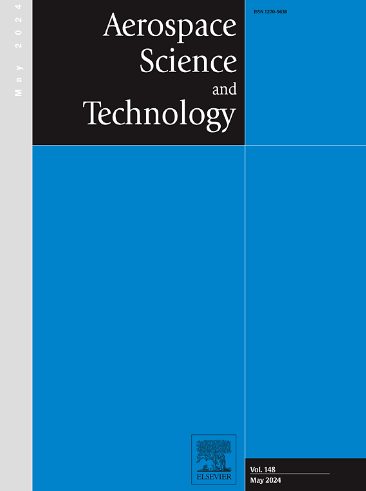Numerical study of aluminum combustion with agglomerate size distribution in solid rocket motor
IF 5
1区 工程技术
Q1 ENGINEERING, AEROSPACE
引用次数: 0
Abstract
The aluminum agglomerate size distribution plays an important role in influencing the particle distributed combustion in motor, which subsequently affects the performance of solid rocket motor significantly. In this work, a three-phase model to describe distributed combustion of aluminum agglomerates is established based on the Eulerian-Lagrangian method. Then, the agglomerate size, including mono size and distributed size, is studied to reveal its effect on aluminum combustion and motor flow field. The simulated results indicate that the increasing agglomerate mono size observes the obvious decrease of the average temperature inside the motor combustion chamber, implying the low combustion efficiency of large agglomerate size. When considering the agglomerate size distribution, the size distribution mode and the mean size D43 determine the combustion efficiency together. In particular, even the mean size is similar, with different distribution mode, like skewed distribution, bimodal or trimodal distribution, the combustion efficiency and flow field parameters are nonnegligible different. However, when the size distribution mode is the same and the peak range is similar, the mean size D43 becomes the only and predominant factor as the mono size.
固体火箭发动机中带有结块粒度分布的铝燃烧数值研究
铝团粒的粒度分布对发动机中的颗粒分布式燃烧有重要影响,进而对固体火箭发动机的性能产生重大影响。本研究基于欧拉-拉格朗日方法,建立了描述铝团粒分布式燃烧的三相模型。然后,研究了团聚体的粒度,包括单粒度和分布粒度,以揭示其对铝燃烧和发动机流场的影响。模拟结果表明,随着结块单粒径的增大,电机燃烧室内的平均温度明显下降,这意味着大粒径结块的燃烧效率较低。在考虑团聚体粒度分布时,粒度分布模式和平均粒度 D43 共同决定了燃烧效率。特别是,即使平均粒度相似,在不同的分布模式下,如偏斜分布、双峰或三峰分布,燃烧效率和流场参数都有不可忽略的差异。然而,当粒度分布模式相同且峰值范围相似时,平均粒度 D43 就会成为唯一且主要的单粒度因素。
本文章由计算机程序翻译,如有差异,请以英文原文为准。
求助全文
约1分钟内获得全文
求助全文
来源期刊

Aerospace Science and Technology
工程技术-工程:宇航
CiteScore
10.30
自引率
28.60%
发文量
654
审稿时长
54 days
期刊介绍:
Aerospace Science and Technology publishes articles of outstanding scientific quality. Each article is reviewed by two referees. The journal welcomes papers from a wide range of countries. This journal publishes original papers, review articles and short communications related to all fields of aerospace research, fundamental and applied, potential applications of which are clearly related to:
• The design and the manufacture of aircraft, helicopters, missiles, launchers and satellites
• The control of their environment
• The study of various systems they are involved in, as supports or as targets.
Authors are invited to submit papers on new advances in the following topics to aerospace applications:
• Fluid dynamics
• Energetics and propulsion
• Materials and structures
• Flight mechanics
• Navigation, guidance and control
• Acoustics
• Optics
• Electromagnetism and radar
• Signal and image processing
• Information processing
• Data fusion
• Decision aid
• Human behaviour
• Robotics and intelligent systems
• Complex system engineering.
Etc.
 求助内容:
求助内容: 应助结果提醒方式:
应助结果提醒方式:


